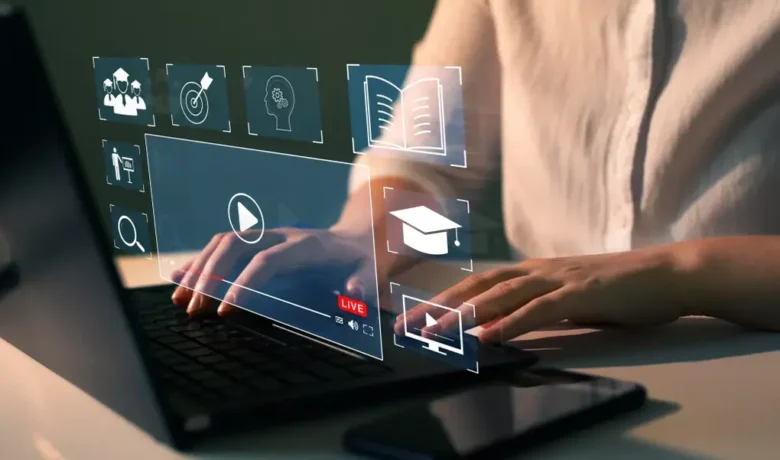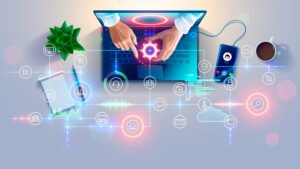Over the past decades, technology has radically changed how knowledge is disseminated, acquired, and experienced in education—one of the most important aspects of human development. Technologies such as tablets, computers, smartphones, and interactive whiteboards, combined with digital platforms and apps, have made education more dynamic, personalized, and accessible. Smart classrooms and e-learning tools have replaced the blackboard and textbooks of traditional teaching methods.
These innovations have not only improved convenience but also made learning more attractive and engaging for students worldwide. When properly integrated, technology can become a limitless journey that fosters creativity, collaboration, and innovation. Technology and digital technologies are impacting every level of education, from preschool to vocational training. This article examines how technology and electronic devices are transforming education and the advantages and disadvantages for future learners.
Virtual Classrooms and Digital Learning:
The shift to digital learning and virtual classrooms is a major transformation in education. Online platforms have become increasingly popular, providing students worldwide with access to high-quality education. Students can attend live classes, communicate with teachers, and collaborate in virtual learning environments powered by computers and tablets. Zoom, Google Classroom, and Microsoft Teams enable remote learning. Digital platforms offer multimedia content such as videos, simulations, quizzes, and interactive activities, allowing students to learn concepts more effectively than with textbooks. Virtual classrooms facilitate blended learning, offering students the flexibility of in-person and online learning. This approach helps prepare students for the digital workplace and saves time and money.
AI-Powered Personalized Learning:
Technology can personalize education based on each student’s learning style and progress. Artificial intelligence (AI) is at the forefront of this revolution by assessing student performance and offering personalized courses. Learning management systems and tools use AI algorithms to track progress, identify strengths and weaknesses, and recommend courses and exercises. Data-driven adaptive learning services like Khan Academy, Coursera, and Duolingo enable personalized learning. Students can revisit challenging subjects and continue learning when they are ready, ensuring no child falls behind. Data-driven tools for personalized learning help teachers understand and support their students. Such technology makes classrooms increasingly student-centered, promoting academic success and boosting students’ confidence.
Gamification and Interactive Tools:
Gamification and interactive tools are also transforming education and making learning more engaging. Tablets and virtual reality (VR) headsets are being used to integrate game-based learning. Gamification makes lessons fun, challenging, and rewarding, engaging students. Students can also explore topics in science, math, and history using interactive apps. Students can learn to program by creating simple video games or exploring the solar system in VR. This innovation makes learning engaging and stimulates creativity and critical thinking. Interactive tools help students retain what they learn because they can experience it firsthand instead of reading it in a textbook.
The Role of Mobile Learning:
Students now have access to knowledge through their smartphones. Mobile learning (m-learning) allows students to access courses, watch videos, read e-books, and use apps anytime, anywhere. Students balancing study, work, or personal commitments benefit from this flexibility. Google Scholar, Quizlet, and Duolingo make learning portable and continuous. Mobile devices allow students to share information, participate in group discussions, and collaborate on projects. Mobile learning connects formal education with lifelong learning, thus promoting skills development in a rapidly changing society.
Digital Infrastructure and Smart Classrooms:
Smart whiteboards, projectors, high-speed internet, and other digital infrastructure create an immersive learning environment in the modern classroom. Smart classrooms combine traditional teaching with advanced technology to enable real-time collaboration. Tablets serve as digital notebooks, while interactive whiteboards help teachers present multimedia examples. Cloud storage and learning management systems make sharing and storing learning resources simple and convenient. This integrated digital infrastructure improves the quality of education, simplifies administrative tasks, and reduces teachers’ workload. The result is an efficient, dynamic classroom ready for the 21st century.
Education for the Future Workforce:
Educational technology helps prepare students for the future workforce. Modern careers require digital literacy, problem-solving skills, and adaptability to ever-changing technologies. Devices and technology tools provide students with hands-on experience with digital platforms, programming, data analysis, and virtual collaboration. These skills are applicable in professional settings and prepare students for academic and professional success. Early exposure to technology fosters innovation and entrepreneurship, nurturing future inventors, programmers, and leaders. Technology-driven education helps prepare students for a digital world.
Challenges to Educational Technology:
While educational technology has advantages, it also has disadvantages. The digital divide is a serious problem, as children living in poverty lack access to electronic devices and high-speed internet. The result widens the learning gap between affluent and disadvantaged students. If not properly managed, device addiction can limit social interaction and attention span. Teachers may need training in using digital tools, making adapting to technology difficult. Cybersecurity and privacy concerns complicate digital learning. To make technology an inclusive tool, governments, institutions, and communities must work together.
Conclusion:
Technology and devices make education more engaging, accessible, and adaptable to the digital age. Virtual classrooms, personalized learning, gamification, and mobile learning are revolutionizing the acquisition and absorption of knowledge. They foster creativity, teamwork, and career preparation, helping students meet the challenges of the future. To effectively leverage technology, we must bridge the digital divide and ensure equal access to educational opportunities for all students. Technology and electronic devices make education a global, dynamic experience. In the future, human oversight and technical support will be essential for building an inclusive, stimulating, and transformative learning ecosystem.
FAQs:
1. How does technology impact the role of teachers?
Technology transforms teachers from knowledge providers to facilitators and mentors. With technology that provides learning resources, teachers can help students navigate digital resources, use data-driven tools, and develop critical thinking skills.
2. What are the benefits of electronic devices in the classroom?
Electronic devices make learning engaging and accessible. They offer each student multimedia content, teamwork, and personalized learning.
3. Are there risks associated with educational technology?
Yes, the digital divide, social isolation, reduced attention span, cybersecurity risks, and teacher training are all concerns. Balanced use and appropriate policies can mitigate these risks.
4. Does mobile learning contribute to modern education?
Flexible mobile learning allows students to access educational content anytime, anywhere. It promotes collaboration with peers and extracurricular activities.
5. Can technology replace all aspects of education?
Technology can enhance learning, but it cannot replace it. Hybrid strategies that combine technology with traditional teaching methods are ideal for interpersonal interaction, guidance, and emotional support.



